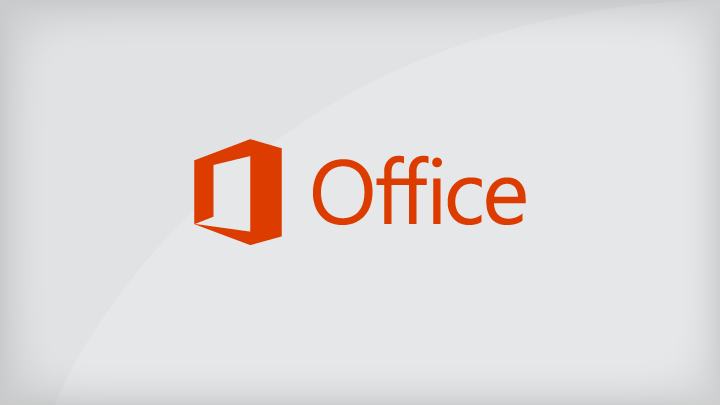Microsoft’s Tug-of-War with User Privacy and Preferences
September 3, 2024, 10:20 am
In the ever-evolving landscape of technology, Microsoft finds itself in a delicate dance with its users. The recent decisions surrounding Windows 11 reveal a company grappling with the balance between innovation and user trust. The spotlight shines on two controversial features: the AI function Recall and the absence of an official registry cleaner. Both issues underscore a broader narrative about privacy, control, and user experience.
Recall, an AI-driven feature designed to enhance user productivity, has become a double-edged sword. It captures screenshots, analyzes user activity, and aims to streamline the search for past actions. However, this noble intention has been met with a chorus of concern. Users fear for their privacy. The idea of a digital overseer, constantly monitoring their every move, feels intrusive. Microsoft’s response? A retreat. The company has decided to allow users to completely remove Recall from their systems. This decision is a direct acknowledgment of the backlash. It’s a classic case of listening to the crowd.
Initially, Recall was positioned as a default feature. Yet, the negative feedback forced Microsoft to rethink its strategy. The company has now placed Recall back into the testing phase, available only to Windows Insiders. This move is a strategic retreat, a way to recalibrate before launching a feature that could alienate users further. Microsoft’s new support page outlines the controls available for Recall, emphasizing user choice. It’s a step in the right direction, but the damage may already be done. Trust, once broken, is hard to mend.
To remove Recall, users must navigate through the Control Panel, a process that feels cumbersome in an age of instant gratification. The feature is now treated as an optional component, a separate entity rather than a core part of the operating system. This change reflects a growing trend in tech: the need for user autonomy. In a world where data is currency, users want to feel in control of their digital lives.
On the other side of the coin lies the request for an official registry cleaner. The Feedback Hub community has voiced its desire for a built-in tool to manage the Windows registry. This request has garnered significant attention, with hundreds of votes backing it. Yet, Microsoft has turned a deaf ear. The company’s stance is clear: it prefers users to steer clear of third-party tools. The warning is loud and clear—tampering with the registry can lead to chaos. It’s a gamble that could end in a system crash.
The absence of an official registry cleaner is puzzling. Many users rely on tools like CCleaner to optimize their systems. These applications promise to enhance performance by removing unnecessary registry entries. Yet, Microsoft’s reluctance to provide a native solution raises questions. Is it a matter of control? Or is it a protective measure against potential user errors? The company’s own PC Manager offers some optimization features, but it has not won the hearts of users. Complaints about its functionality and the introduction of ads have marred its reputation.
Microsoft’s approach seems to oscillate between empowerment and caution. On one hand, it seeks to provide users with tools to enhance their experience. On the other, it warns against the dangers of third-party applications. This duality creates confusion. Users want to feel supported, not stifled. They crave tools that work seamlessly, without the fear of unintended consequences.
The tech giant’s decisions reflect a broader trend in the industry. Companies are increasingly aware of the importance of user privacy. The backlash against invasive features like Recall is a testament to this shift. Users are no longer passive consumers; they are vocal advocates for their rights. They demand transparency and control over their digital environments.
As Microsoft navigates these turbulent waters, it must find a way to bridge the gap between innovation and user trust. The future of Windows 11 hinges on its ability to listen and adapt. Features like Recall must be implemented with care, ensuring that users feel secure rather than surveilled. The call for an official registry cleaner is a plea for empowerment. Users want tools that enhance their experience, not hinder it.
In conclusion, Microsoft stands at a crossroads. The decisions it makes today will shape the future of its operating system. The balance between privacy and functionality is delicate. Users are not just looking for features; they are seeking a partnership. A partnership built on trust, transparency, and respect for their choices. As the tech landscape continues to evolve, Microsoft must remember: the user experience is paramount. The dance between innovation and user trust is ongoing, and the rhythm must be just right.
Recall, an AI-driven feature designed to enhance user productivity, has become a double-edged sword. It captures screenshots, analyzes user activity, and aims to streamline the search for past actions. However, this noble intention has been met with a chorus of concern. Users fear for their privacy. The idea of a digital overseer, constantly monitoring their every move, feels intrusive. Microsoft’s response? A retreat. The company has decided to allow users to completely remove Recall from their systems. This decision is a direct acknowledgment of the backlash. It’s a classic case of listening to the crowd.
Initially, Recall was positioned as a default feature. Yet, the negative feedback forced Microsoft to rethink its strategy. The company has now placed Recall back into the testing phase, available only to Windows Insiders. This move is a strategic retreat, a way to recalibrate before launching a feature that could alienate users further. Microsoft’s new support page outlines the controls available for Recall, emphasizing user choice. It’s a step in the right direction, but the damage may already be done. Trust, once broken, is hard to mend.
To remove Recall, users must navigate through the Control Panel, a process that feels cumbersome in an age of instant gratification. The feature is now treated as an optional component, a separate entity rather than a core part of the operating system. This change reflects a growing trend in tech: the need for user autonomy. In a world where data is currency, users want to feel in control of their digital lives.
On the other side of the coin lies the request for an official registry cleaner. The Feedback Hub community has voiced its desire for a built-in tool to manage the Windows registry. This request has garnered significant attention, with hundreds of votes backing it. Yet, Microsoft has turned a deaf ear. The company’s stance is clear: it prefers users to steer clear of third-party tools. The warning is loud and clear—tampering with the registry can lead to chaos. It’s a gamble that could end in a system crash.
The absence of an official registry cleaner is puzzling. Many users rely on tools like CCleaner to optimize their systems. These applications promise to enhance performance by removing unnecessary registry entries. Yet, Microsoft’s reluctance to provide a native solution raises questions. Is it a matter of control? Or is it a protective measure against potential user errors? The company’s own PC Manager offers some optimization features, but it has not won the hearts of users. Complaints about its functionality and the introduction of ads have marred its reputation.
Microsoft’s approach seems to oscillate between empowerment and caution. On one hand, it seeks to provide users with tools to enhance their experience. On the other, it warns against the dangers of third-party applications. This duality creates confusion. Users want to feel supported, not stifled. They crave tools that work seamlessly, without the fear of unintended consequences.
The tech giant’s decisions reflect a broader trend in the industry. Companies are increasingly aware of the importance of user privacy. The backlash against invasive features like Recall is a testament to this shift. Users are no longer passive consumers; they are vocal advocates for their rights. They demand transparency and control over their digital environments.
As Microsoft navigates these turbulent waters, it must find a way to bridge the gap between innovation and user trust. The future of Windows 11 hinges on its ability to listen and adapt. Features like Recall must be implemented with care, ensuring that users feel secure rather than surveilled. The call for an official registry cleaner is a plea for empowerment. Users want tools that enhance their experience, not hinder it.
In conclusion, Microsoft stands at a crossroads. The decisions it makes today will shape the future of its operating system. The balance between privacy and functionality is delicate. Users are not just looking for features; they are seeking a partnership. A partnership built on trust, transparency, and respect for their choices. As the tech landscape continues to evolve, Microsoft must remember: the user experience is paramount. The dance between innovation and user trust is ongoing, and the rhythm must be just right.

